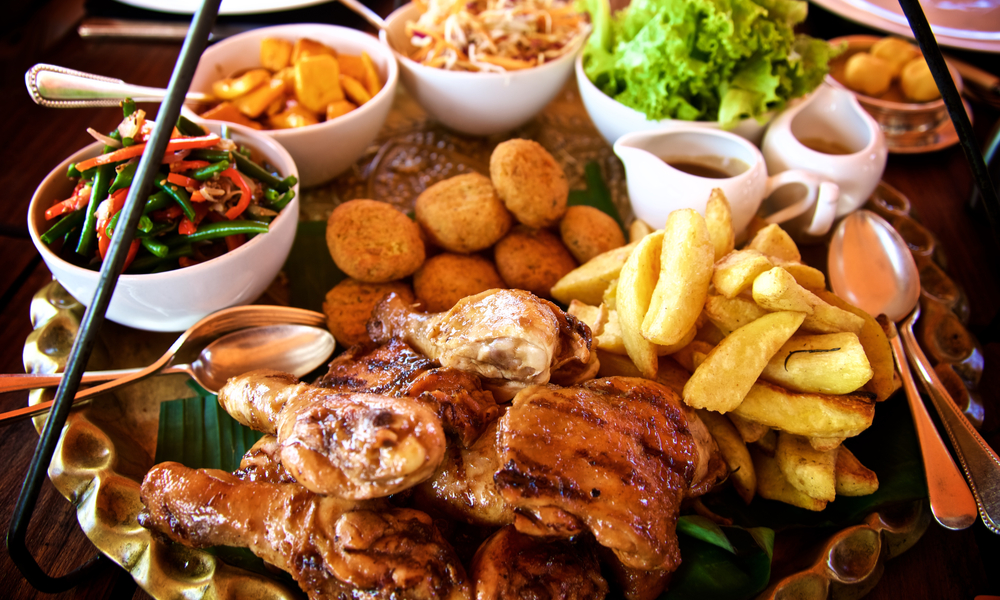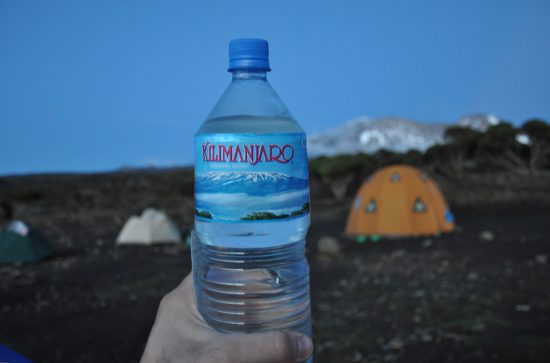Food & Water on Kilimanjaro
If you think you’re going to be eating boring, dehydrated meals, think again!
On Kilimanjaro expeditions, you will be fed hot, yummy meals made of fresh ingredients – three times a day! The menu is designed to ensure your calorie intake matches your level of exertion. It will provide you with the necessary protein, carbohydrates, and fat to keep trekking. When you are at altitude you could start to feel nauseous and your appetite may be suppressed, so the meals prepared at high altitude usually contain more carbohydrates and less protein to help you digest faster.

Hot food is prepared by your mountain chef.
You will be served a hot breakfast, either packed lunch or hot lunch, and an evening meal. In addition to your three meals a day you will also have afternoon tea, with popcorn or biscuits and fresh fruit. Sample meals include:
Breakfast – ‘Bed tea’ (with a smile), chapatti, oat porridge, sausages, scrambled eggs, French toast with honey, toasted bacon and cheese sandwich, fresh fruits or fruit filled pancakes.
Lunch boxes may contain – samosa, sandwich, fresh fruit, boiled egg, chopped salad vegetables (carrot, tomato, pepper), cashew nuts, chocolate bar, cake and fruit juice. A hot drink will be prepared at the stopping place. Energy snacks may be provided for the summit e.g. chocolate, nuts, popcorn or biscuits.
Dinner starts with a type of soup, (e.g. leek and potatoes, pumpkin, carrot and lentil with coriander), spicy chicken soup, or fresh salad vegetables with mayonnaise and is followed up with – fried tilapia fish fillet with fries and salad vegetables, beef goulash, spicy fried chicken with vegetable sauce and rice, pasta with mixed vegetables in a rich tomato sauce, Tanzanian banana stew (Ndizi), beef and rice (Nyama na wali)
Desert may be fresh fruits, fried bananas with chocolate sauce, Tanzanian pancake with honey and yogurt.
Hot drinks with each meal include (tea, coffee, milo, chocolate).
You may wish to bring your own snacks to provide well deserved treat, or energy boost! Chocolate is generally the best answer and if it has nuts, even better. Whatever you choose though make sure it is a favorite treat and not just ‘power bars’, or ‘energy gels’.
If you are suffering from altitude sickness your appetite may be suppressed and these snacks may become a good supplement to your meals, so make sure it is something that you enjoy eating! A powdered energy drink such as Gatorade is also a good source of energy and will help with the taste of the water if you have been using iodine tablets.
Personally, I loved the food on Kilimanjaro. It was always much better than expected and I give a lot of credit to the chefs for making such good meals.
Water is collected and purified from streams.
You will need to consume more water on Kilimanjaro than you would normally drink on an average day at home to keep properly hydrated. This is due to the physically exertion of walking between 4 – 8 hours per day and the effect of being at high altitude.

Remember to drink at least 4 liters of water ever day when above 12,000 feet.
Water is provided by the porters who will fetch water from the streams near the camps on Kilimanjaro. The water is then boiled by the porters, which should be fine for drinking. Sometimes filters or chemical tablets are used to treat the water. I never had an issue with drinking the water on the mountain.
High on Kilimanjaro the water is pretty clean, except for those few places where it has been contaminated by human waste. The lower you are, elevation-wise, and the closer you are to campsites and popular trekking routes, the more likely it is not clean. Nevertheless, you definitely want to boil or treat your water at all times.